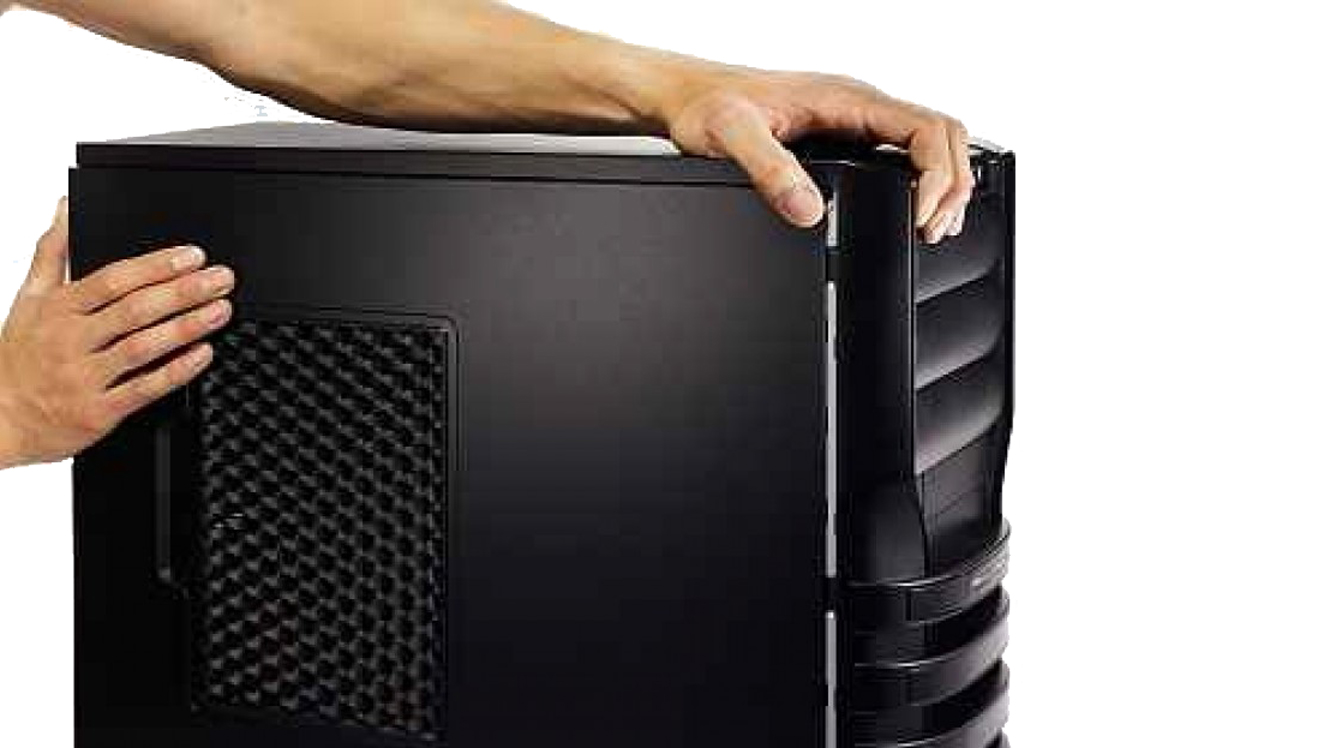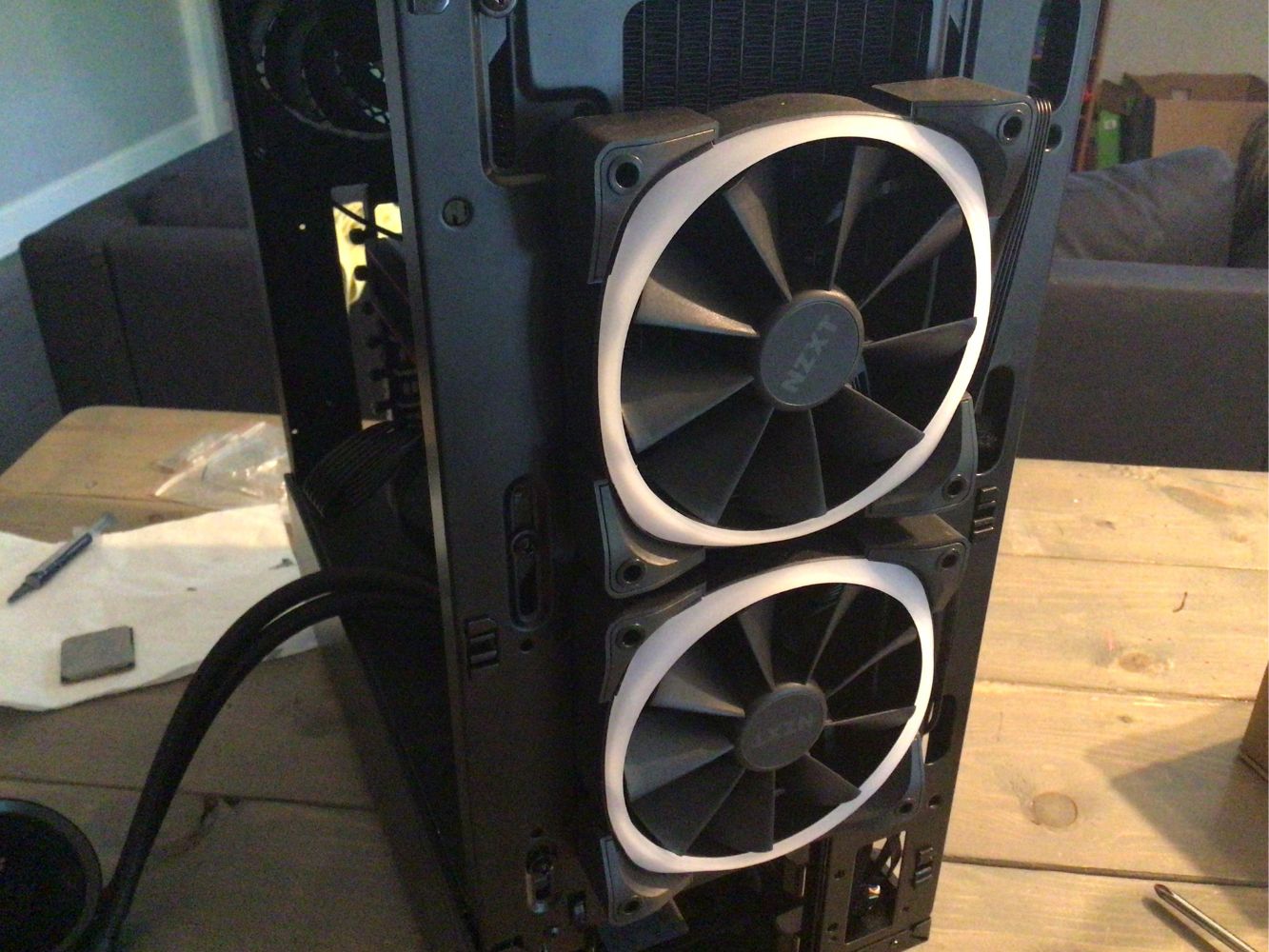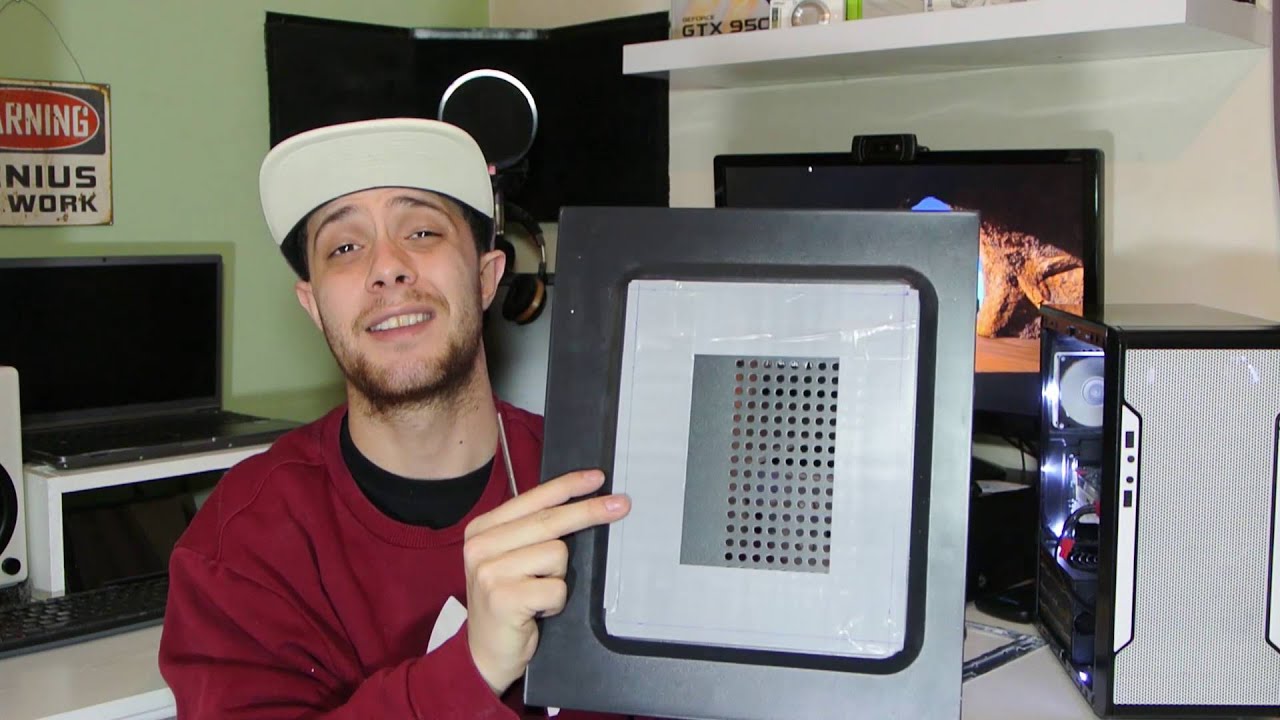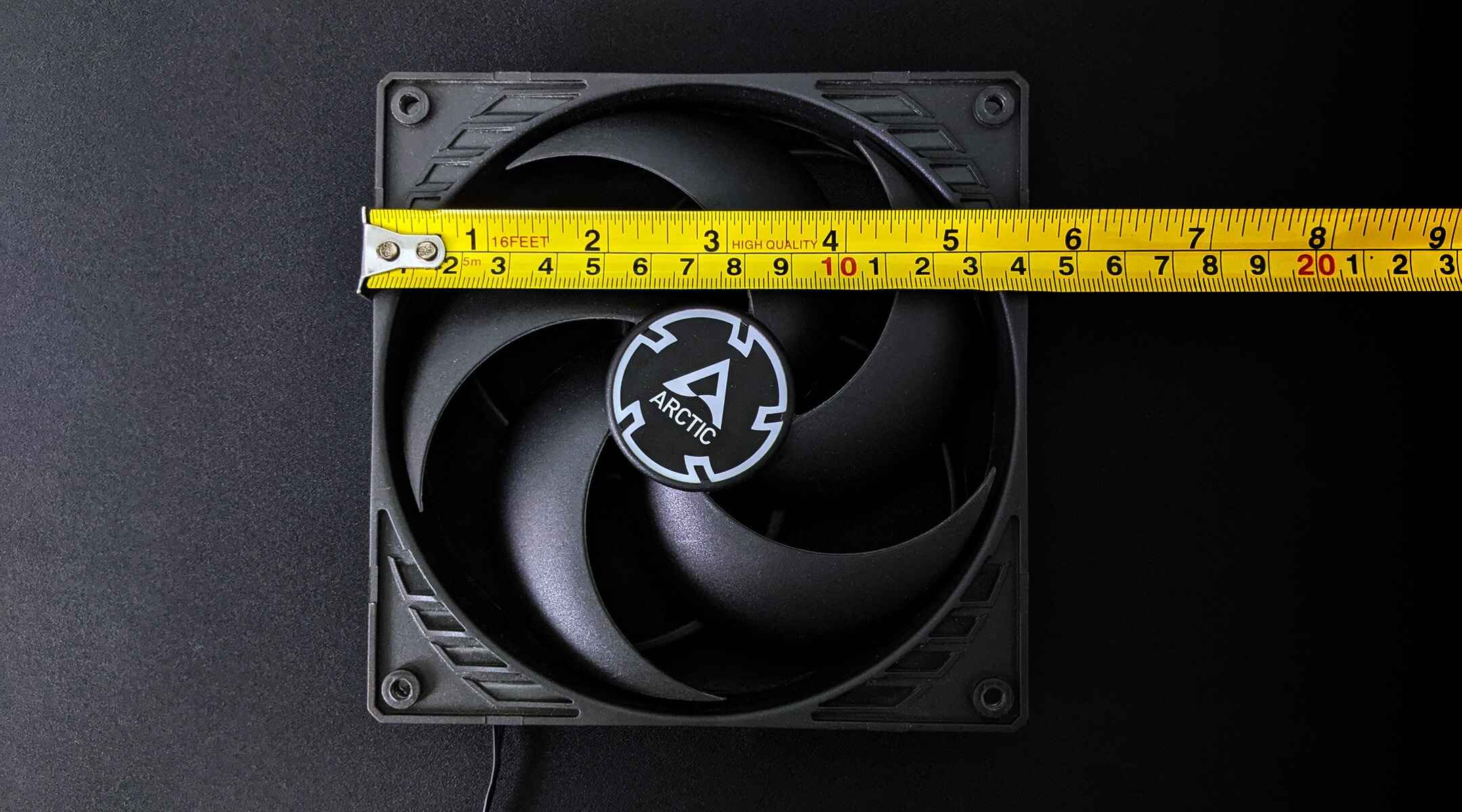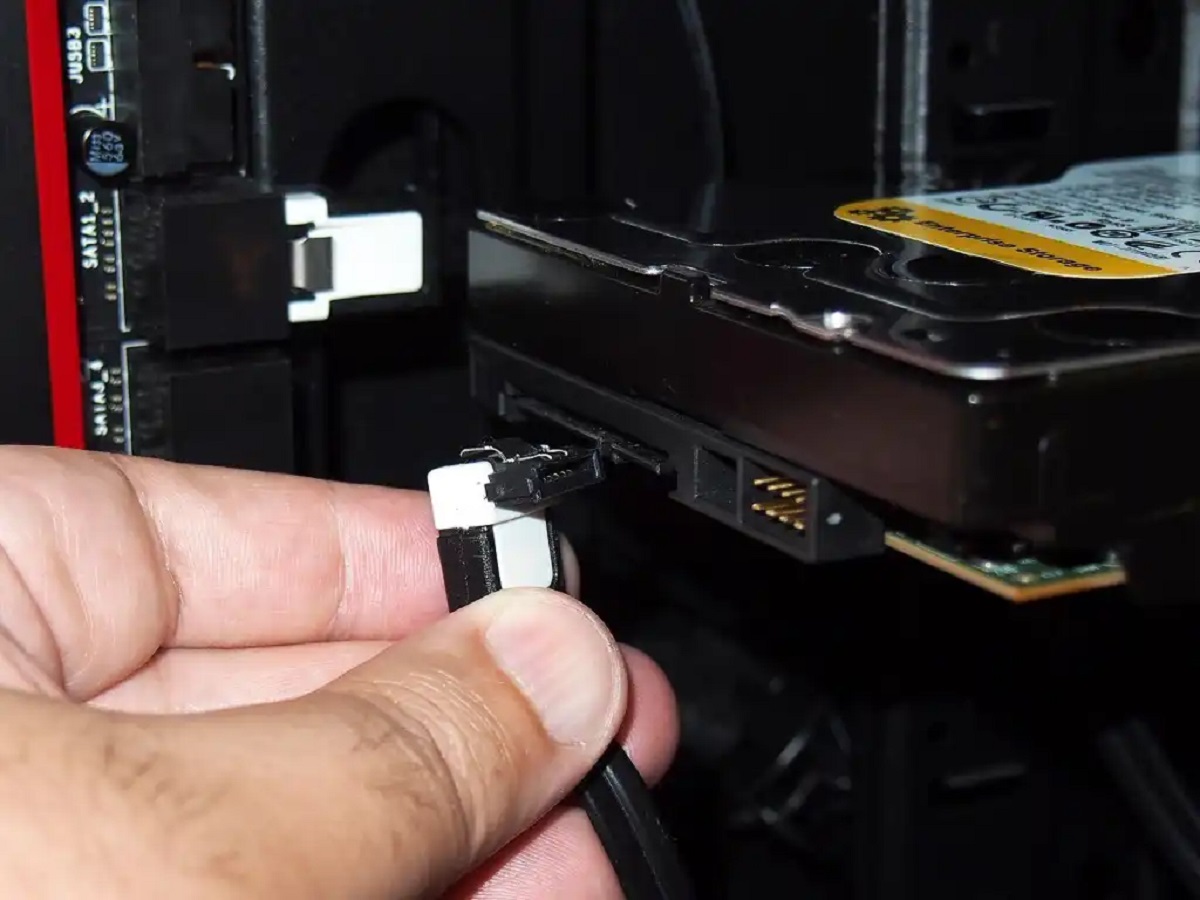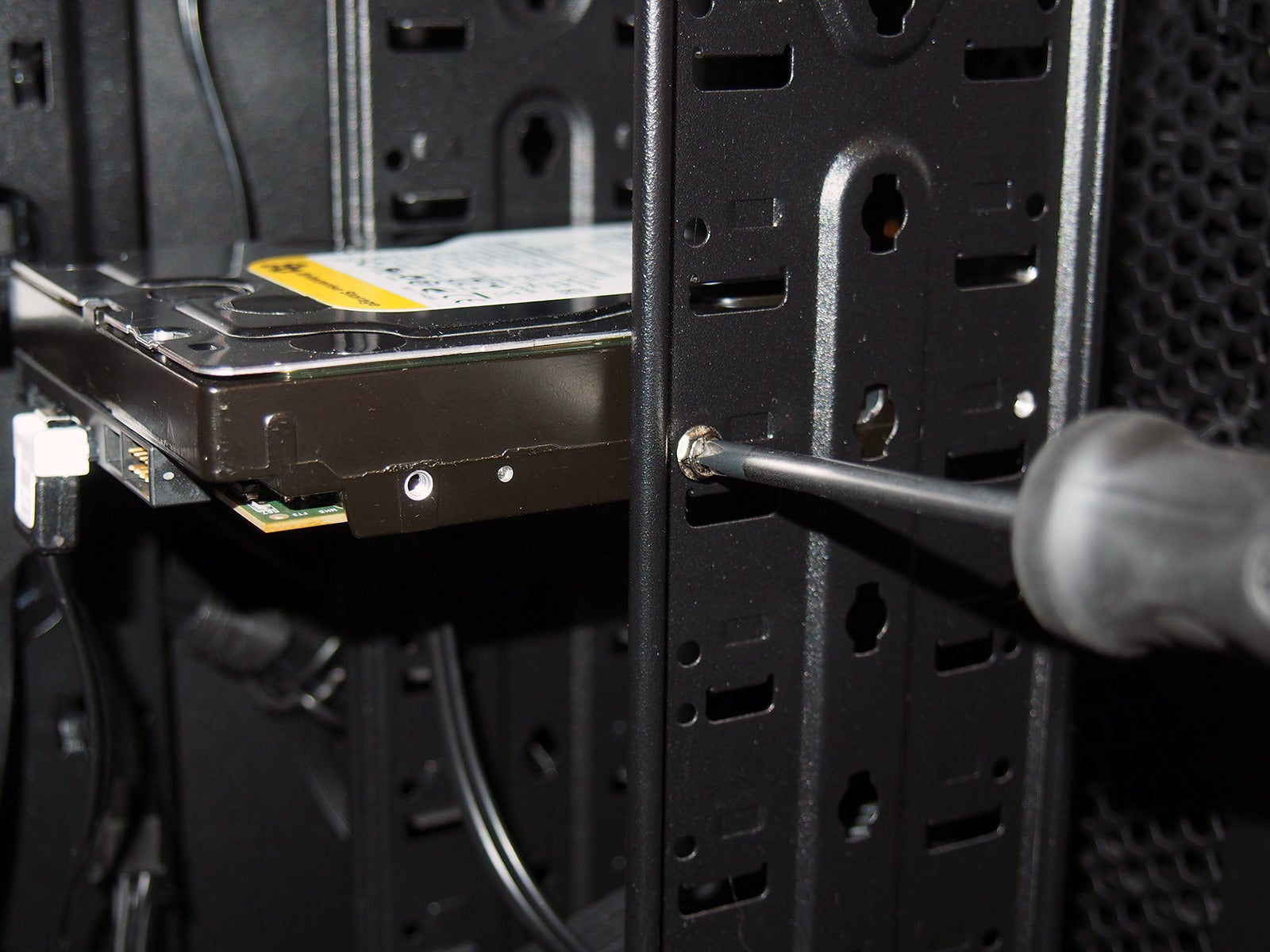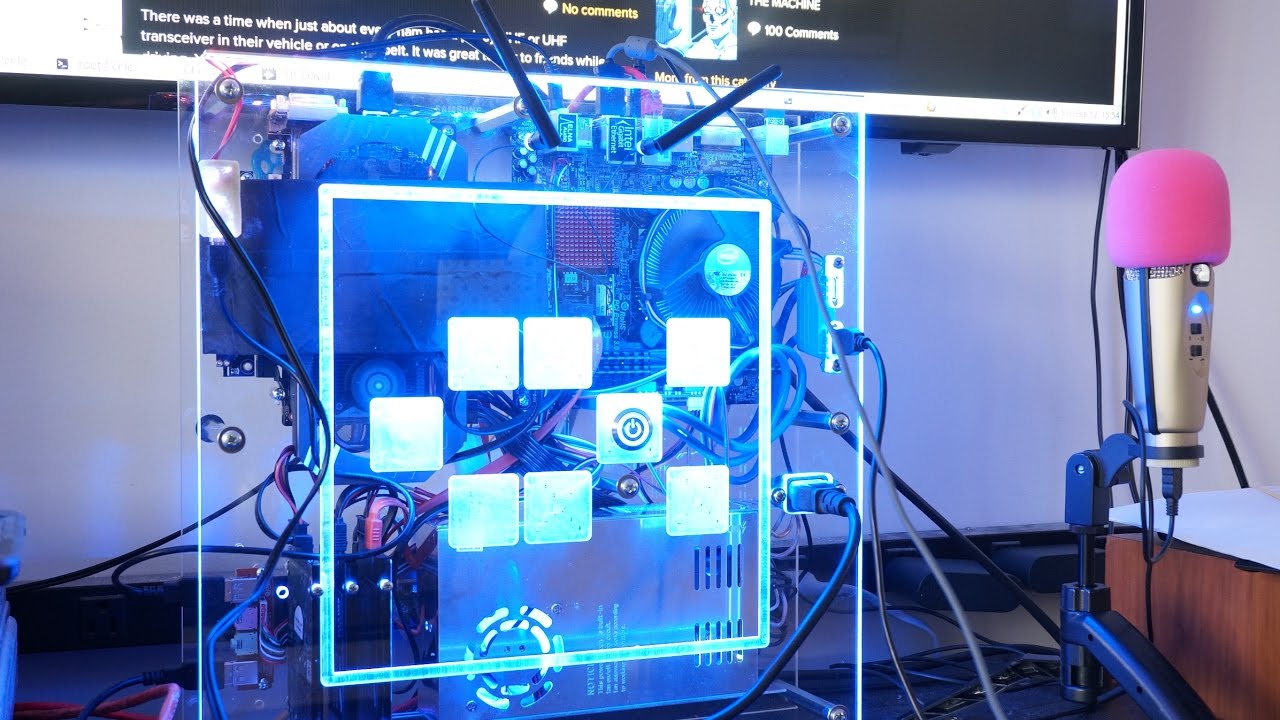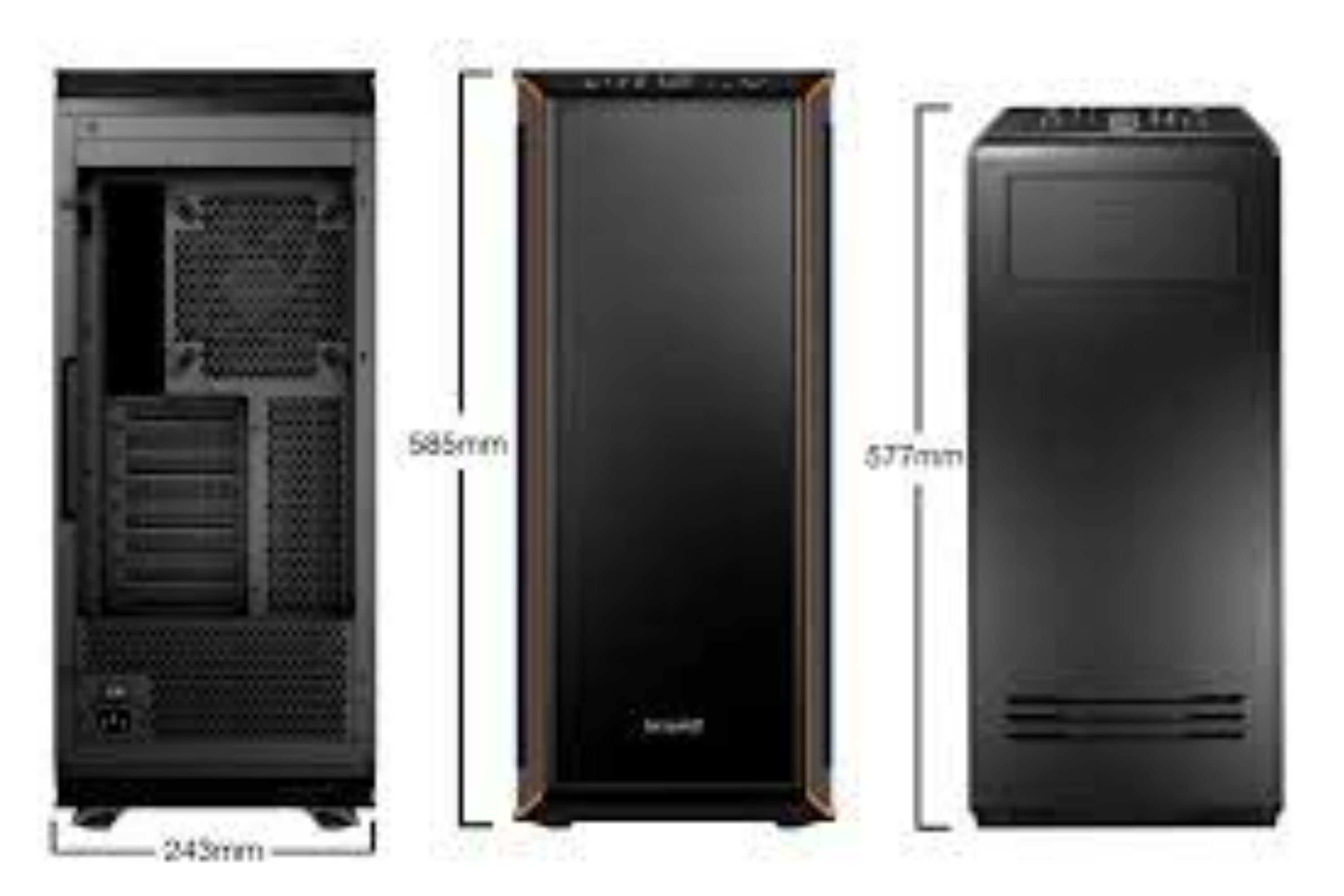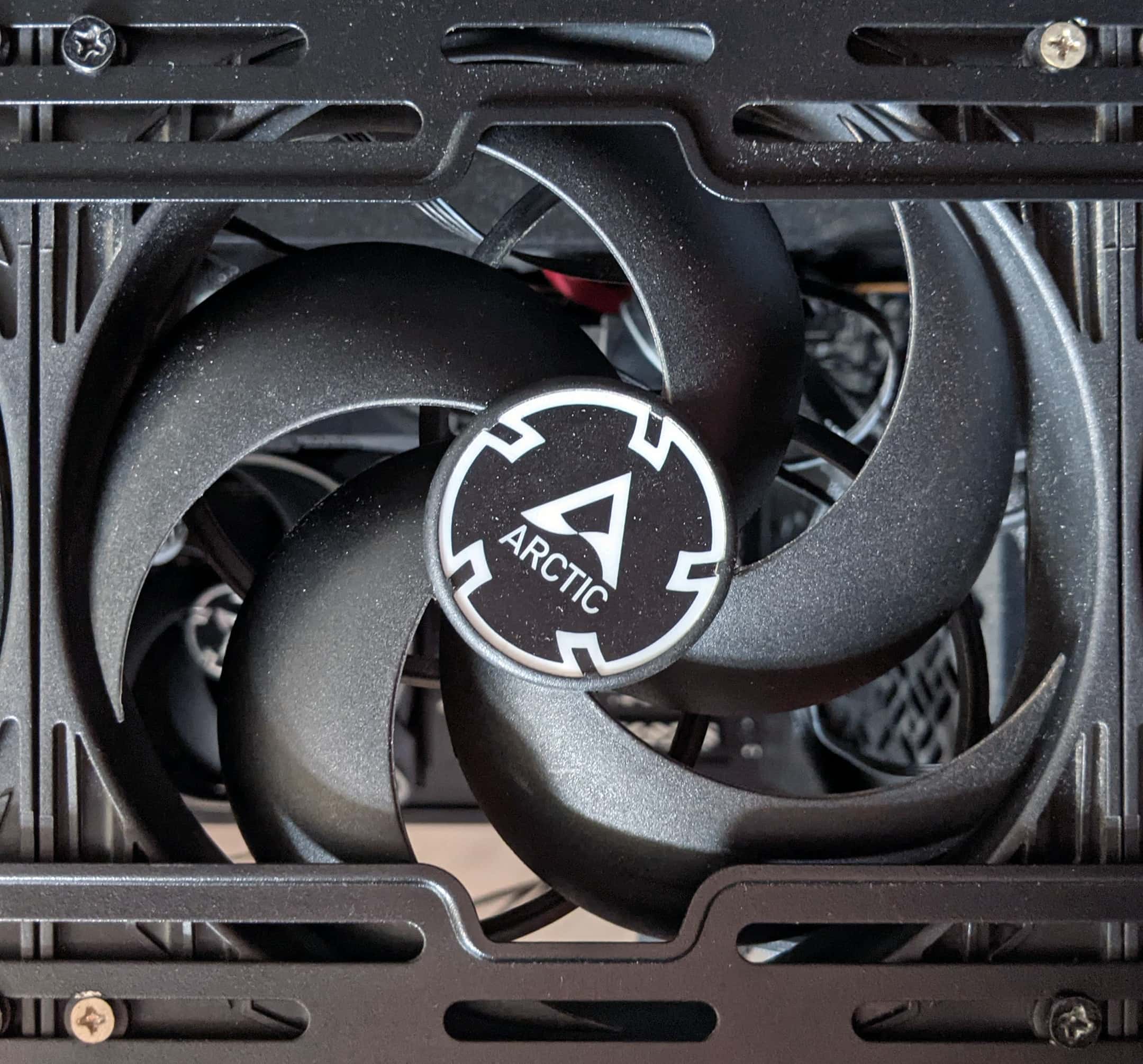Introduction
A personal computer (PC) case is an essential component that houses and protects the internal hardware of a computer. While the primary purpose of a PC case is to provide a secure and organized environment for the computer components, it also features multiple holes strategically placed on its back. These holes serve various important functions, contributing to the overall performance and usability of the PC.
Understanding the purpose of these holes is crucial for PC enthusiasts and builders who want to optimize airflow, manage cables efficiently, or install additional cooling solutions. In this article, we will explore the different holes found on the back of a PC case and their respective functions.
From ventilation holes to cable management holes and dust filter holes, each serves a specific purpose to ensure the smooth operation of the PC. By gaining knowledge about these holes, you will be better equipped to make informed decisions when it comes to building or upgrading your PC.
So, without further ado, let’s dive into the world of PC case holes and discover their secrets.
Ventilation Holes
One of the primary functions of the holes on the back of a PC case is to facilitate proper ventilation. These ventilation holes, also known as exhaust or fan mounting holes, play a crucial role in maintaining optimal airflow within the case.
The components inside a PC generate heat during operation, and it is essential to dissipate this heat effectively to prevent overheating and ensure the longevity of the hardware. The ventilation holes on the back of the PC case allow hot air to exit the case, making space for cooler air to be drawn in.
The size and placement of the ventilation holes are carefully designed to create a natural airflow path. They are typically located near the CPU and GPU areas to assist in expelling the hot air generated by these high-performance components. By expelling hot air efficiently, the ventilation holes help in maintaining lower temperatures inside the case, which can improve overall performance and prevent thermal throttling.
It is common to find fan mounting holes around the ventilation area on the back of the PC case. By attaching fans to these holes, users can further optimize airflow and enhance cooling performance. Fans can be positioned as exhaust fans, pushing the hot air out, or as intake fans, bringing fresh air into the case.
In some cases, PC enthusiasts may even install liquid cooling radiators in the form of all-in-one (AIO) coolers or custom water cooling setups. The ventilation holes on the back of the case also serve as mounting points for these cooling solutions. The radiator is positioned outside the case, and the ventilation holes house the corresponding tubes and cables, ensuring a tidy installation.
Cable Management Holes
One of the challenges of building a PC is managing the multitude of cables that come with various components. Cable management is crucial not only for aesthetics but also for efficient airflow and ease of maintenance. This is where cable management holes on the back of a PC case play a significant role.
Cable management holes, also known as cable routing or cable grommet holes, are strategically placed openings on the backside of the case to guide and organize cables. These holes allow you to route cables from the interior of the case to the backside, keeping them hidden from view and preventing clutter.
By routing cables through these holes, you can achieve a clean and organized interior, which not only improves aesthetics but also facilitates better airflow. Proper cable management ensures that cables do not obstruct the internal fans or disrupt the natural airflow path within the case, leading to improved cooling performance.
The size and number of cable management holes may vary from case to case. Some cases feature dedicated rubber grommets surrounding these holes. These grommets serve multiple purposes, including acting as cable protectors, preventing cable chafing, and reducing vibration noise.
Additionally, cable management holes often come with tie-down points or hooks, allowing you to secure and fasten the cables in place. This helps to prevent cables from sagging or obstructing other components when performing maintenance or upgrades.
Proper cable management not only enhances the overall aesthetics but also simplifies troubleshooting and maintenance. When cables are neatly organized and labeled, it becomes easier to identify and address any issues that may arise.
So, next time you open up your PC case, take advantage of the cable management holes and spend some time organizing your cables. Not only will it result in a visually appealing build, but it will also contribute to improved airflow and easier maintenance.
Water Cooling Holes
For users looking to achieve exceptional cooling performance, especially when pushing their hardware to the limits, water cooling is a popular choice. Water cooling involves using liquid coolant to dissipate heat from the components more efficiently than traditional air cooling. To accommodate water cooling setups, PC cases often feature specific holes on the back, commonly known as water cooling holes.
Water cooling holes provide an easy and convenient way to route tubes and cables from the interior of the case to the external water cooling components. These holes are strategically placed to ensure a proper and tidy installation, maintaining the overall integrity and aesthetics of the system.
The size and number of water cooling holes may vary depending on the case’s design and the type of water cooling system being used. Some cases offer pre-drilled holes with rubber grommets, ensuring a secure and leak-free seal around the tubing. These grommets not only provide a clean and sleek appearance but also help to minimize vibration and noise.
In addition to accommodating tubing, water cooling holes may also feature mounting points for fittings and reservoirs. These mounting points provide a secure location to attach the various components of the water cooling system, ensuring stability and preventing any unwanted movement or damage.
Water cooling offers a multitude of benefits beyond superior cooling performance. It allows for quieter operation, as the fans on radiators can be run at lower speeds compared to air coolers. It also provides more headroom for overclocking, as the cooler temperatures help to mitigate the heat generated by the components.
While water cooling is not necessary for every PC build, those who seek maximum performance and quieter operations can greatly benefit from it. The presence of water cooling holes on the back of a PC case allows enthusiasts and builders to explore this advanced cooling method without compromising on aesthetics or system functionality.
Expansion Slot Holes
Expansion slot holes are another important feature found on the back of a PC case. These holes are located along the rear panel and allow for the installation of expansion cards, such as graphics cards, sound cards, or network adapters.
The primary purpose of the expansion slot holes is to provide access to the motherboard’s expansion slots, which are located on the interior of the case. These slots allow users to add or upgrade various hardware components and expand the capabilities of their PC.
Expansion cards are inserted into the expansion slots on the motherboard and then secured in place by attaching them to the corresponding expansion slot holes on the back of the case. These holes align with the slots on the motherboard, allowing seamless connectivity between the expansion card and the motherboard.
The size and layout of the expansion slot holes may vary depending on the form factor of the motherboard and the case design. Commonly, PC cases have a series of vertical or horizontal aligned holes to accommodate different motherboard layouts, such as ATX, micro ATX, or mini-ITX.
In addition to providing access and connectivity, expansion slot holes also offer support for proper airflow within the case. Graphics cards, in particular, are power-hungry components that generate a significant amount of heat during operation. By having ventilation holes aligned with the expansion slots, hot air generated by the graphics card can be expelled efficiently, preventing thermal buildup and ensuring optimal cooling performance.
Furthermore, the expansion slot holes also serve as a means of securing the expansion cards, preventing them from accidentally dislodging during transportation or vibrations. This helps in maintaining a secure and stable connection between the expansion card and the motherboard.
Overall, expansion slot holes play a vital role in expanding the capabilities of a PC by allowing the installation of additional hardware components. They provide easy access, proper ventilation, and secure connections, contributing to the overall functionality and performance of the system.
Power Supply Holes
Power supply holes, also known as PSU holes or PSU pass-throughs, are an essential feature found on the back of a PC case. These holes are specifically designed to accommodate the installation and routing of power supply cables.
The primary purpose of power supply holes is to provide a convenient way to connect the power supply unit (PSU) to the internal components of the PC. The PSU is responsible for converting and delivering the appropriate electrical power to the various components, ensuring their proper operation.
Power supply holes are strategically positioned on the back of the case to allow the PSU cables to pass through and connect to the motherboard, storage drives, graphics card, and other peripherals. These holes are often equipped with rubber grommets to protect the cables, minimize cable strain, and provide a clean and tidy appearance.
By routing the power supply cables through these holes, users can effectively manage and organize the cables inside the case, preventing clutter and improving overall airflow. Proper cable management not only enhances the aesthetics of the build but also allows for better cooling performance by ensuring unobstructed airflow within the case.
When it comes to cable management with power supply holes, it’s important to consider the length and number of cables, as well as the size and layout of the case. Some cases offer multiple power supply holes, enabling users to route cables to different areas of the motherboard and components, further enhancing cable management possibilities.
Furthermore, power supply holes also play a role in ensuring compatibility between the case and the power supply unit. PC cases come in various sizes and configurations, and power supply holes are designed accordingly to accommodate different PSU form factors, such as ATX, SFX, or TFX. This allows for a seamless fit and secure installation of the power supply unit.
In summary, power supply holes on the back of a PC case serve as a convenient and organized way to connect and route power supply cables throughout the system. They contribute to effective cable management, improved airflow, and overall compatibility between the case and the PSU, ensuring the stability and functionality of the PC.
I/O Port Holes
I/O port holes, also referred to as I/O shield cutouts or I/O panel cutouts, are an essential feature found on the back of a PC case. These holes are designed to accommodate the input/output ports of the motherboard and provide external access to various connectivity options.
The I/O port holes are located on the rear panel of the case and align with the ports on the I/O shield of the motherboard. The I/O shield, which is a metal or plastic plate that comes with the motherboard, ensures a proper fit and connection between the motherboard and the case.
The purpose of the I/O port holes is to provide easy access to a range of connectivity options, including USB ports, audio jacks, Ethernet ports, and display outputs. These ports allow users to connect peripherals such as keyboards, mice, monitors, speakers, and network cables to the PC.
The number and layout of the I/O port holes may vary depending on the specific motherboard and case design. It’s common to find a variety of port options, including USB Type-A, USB Type-C, HDMI, DisplayPort, audio jacks, Ethernet, and more.
These holes are designed to be precise in size and position, ensuring a secure and snug fit for the I/O shield and providing a seamless integration between the motherboard and the case. This helps in maintaining the structural integrity of the case and preventing any potential dust or debris from entering through the I/O port area.
In addition to the standard I/O port holes, some PC cases may offer additional I/O expansion slots. These slots provide the flexibility to install additional expansion cards, such as a fan controller or an I/O card for enhanced connectivity options.
Overall, I/O port holes on the back of a PC case play a crucial role in providing external access to a wide range of connectivity options. They ensure proper alignment and integration between the motherboard and the case, allowing users to effortlessly connect their peripherals and enjoy a seamless computing experience.
Dust Filter Holes
Dust filter holes are an important feature found on the back of many PC cases. These holes, also known as dust filter cutouts, are strategically placed to help prevent dust and debris from entering the case and accumulating on internal components.
Dust is a common enemy of electronic devices, and it can negatively impact the performance and lifespan of PC components. The constant circulation of air inside the case can cause dust particles to settle on sensitive hardware, such as the CPU, graphics card, or motherboard. Over time, this build-up of dust can hinder airflow, increase temperatures, and potentially lead to hardware malfunctions.
To mitigate the accumulation of dust, dust filter holes are equipped with removable filters that trap airborne particles before they can enter the case. These filters are often made of mesh or fabric materials that allow airflow while capturing and trapping dust particles.
The placement of dust filter holes is typically aligned with the intake areas of the case, such as the front panel or bottom panel, where air is drawn in by fans or ventilation openings. By covering these intake areas with dust filters, the case acts as a barrier, preventing large and fine dust particles from entering the system.
Regularly cleaning and maintaining these dust filters is essential to ensure optimal airflow and cooling performance. Most filters can be easily removed and washed or vacuumed to remove the collected dust. Additionally, some cases feature magnetic dust filters that are quick and simple to detach and clean.
By incorporating dust filter holes into the design of a PC case, users can significantly reduce the amount of dust that enters the system, prolonging the lifespan of their components and minimizing the need for frequent cleaning.
It is important to note that while dust filters are effective at capturing larger dust particles, they may not be able to prevent the intake of microscopic particles. Therefore, regular cleaning of the case and internal components is still recommended to maintain optimal performance and prevent long-term damage.
In summary, dust filter holes with their accompanying filters are a valuable addition to PC cases. They play a crucial role in reducing the amount of dust that enters the system, protecting the internal components, and promoting better airflow and cooling performance.
Conclusion
In this article, we’ve explored the various holes found on the back of a PC case and their important functions. From ventilation holes that promote airflow to cable management holes that organize and optimize cable routing, each hole serves a specific purpose in enhancing the performance and usability of a PC.
We’ve learned that ventilation holes facilitate efficient heat dissipation, preventing overheating and improving overall system performance. Cable management holes help in creating a clean and organized interior, improving airflow and making maintenance easier. Water cooling holes accommodate advanced cooling solutions, allowing users to achieve superior cooling capabilities. Expansion slot holes provide access to motherboard expansion slots, enabling the installation of additional hardware components. Power supply holes facilitate easy connectivity of PSU cables to internal components, ensuring proper power distribution. I/O port holes offer external access to various connectivity options, allowing users to connect peripherals seamlessly. Finally, dust filter holes equipped with removable filters help in preventing dust and debris from entering the case and accumulating on internal components.
Understanding the purpose of these holes is crucial for PC enthusiasts and builders who want to optimize airflow, manage cables efficiently, or install advanced cooling solutions. By leveraging these holes and their respective functions, users can create a well-organized, optimized, and visually appealing PC build.
So, the next time you open up a PC case, take note of these holes and their significance. Incorporating their functions into your build can lead to improved performance, enhanced cooling, and a more enjoyable computing experience. Whether you’re a gamer, a content creator, or simply someone who appreciates a well-functioning PC, understanding and utilizing these holes can make a significant difference.
Let the holes on the back of your PC case serve as a reminder of the intricacies and thoughtfulness that go into creating a functional and efficient computer system. Embrace the potential they offer and explore the possibilities of maximizing your PC’s performance.







